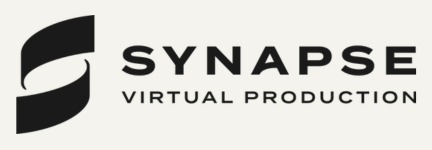
The Rise of Influencers in Regulated Industries

If you work in FinTech or insurance and want to reach niche, high-value audiences or build credibility as a thought-leader, here’s what you need to know about leveraging influencers effectively without getting lost in sign-off and risk reviews.
Why influencer marketing matters
We’re seeing a trend: even the most regulated industries are beginning to experiment with influencers to speak directly to decision-makers and high-value customers.
Increase brand visibility in a very specific and high-value audience.
Demonstrate thought leadership and credibility on an audience and industry level.
Access an audience through trusted voices who already command attention.
B2B buyers don’t look to brands for expertise - they seek out individuals whose perspectives they trust e.g. financial analyst, an industry-focused podcast host, etc.
B2B vs B2C Influencers: Key differences
In consumer-facing sectors, working with a popular lifestyle influencer is often a straightforward and quick way to increase visibility. On the other hand, in B2B, the criteria are different.
You’re not aiming for just any large audience - you need to reach a specific group of decision-makers who value authority, knowledge, and transparency.
That is why:
- Niche expertise matters more than follower count.
- Regulatory frameworks have to be considered in campaign content (think disclaimers or guidelines that meet compliance standards).
- Audience alignment takes priority over flashy creativity.
For example, a campaign referencing wealth management strategies is likely to deliver improved results if it’s hero-ed with a well-known personal finance commentator with proven credibility in investment circles, even if they don’t have millions of followers.
If you’re unsure about when to leverage influencers for your campaigns, watch this video.
X3 Steps to a streamlined process
The biggest challenge in your industry is the onboarding process. What you don’t want is to miss the moment because of approval waiting.
The key is to create a system that respects internal protocols without affecting creativity or timeliness.
1. Clarify Roles and Responsibilities
Map out who needs to sign off on each stage (legal, compliance, data privacy, brand, risk). This creates a transparent workflow, so each team knows when and how to give input.
2. Pre-Vet Influencers
Gather a shortlist of influencers who align with your brand values, audience demographics, and compliance requirements. Review their content history (including how they discuss regulatory topics) to mitigate any reputational risk.
3. Establish Clear Guidelines
Be upfront about brand messaging, disclaimers, and any formal statements influencers must include. This not only speeds up approvals but also avoids last-minute changes that can derail a campaign.
The balance of compliance and creativity
As a B2B marketing manager, you face a unique set of challenges.
Beyond the usual content approvals, you may need to check in with your legal team, compliance officers, data protection experts, and the list goes on.
A question we get asked a lot by B2B marketers is: Will regulations and internal sign-offs kill the creative spark of influencer campaigns? The short answer is no, provided you plan ahead.
A well-devised framework includes checkpoints for legal and compliance but also maintains creative freedom for influencers. That way, they can speak authentically to their audience while meeting your brand’s requirements.
Some of the most successful industry campaigns come from companies that struck this balance well, where influencers were briefed thoroughly on compliance guidelines and still managed to retain their unique tone and style.
In conclusion
B2B in regulation-heavy industries requires a willingness to navigate complexity, and a keen eye on compliance.
But with the right framework, influencer marketing can be a high-impact approach to increasing brand awareness and driving engagement.
By taking the time to pre-vet influencers, align internal teams, and allow for creative flexibility, your campaigns will deliver results, even in a tightly regulated space.















